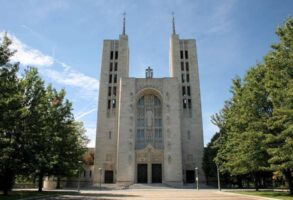
Published January 12, 2023
In August 2018, the Attorney General of Pennsylvania released a Grand Jury report on clergy sexual abuse cases in most of the Commonwealth’s Catholic dioceses. It was not the first report of its kind. In fact, a similar report covering the Archdiocese of Philadelphia and Diocese of Altoona-Johnstown had been published several years prior. But the 2018 report came just weeks after bombshell revelations about Theodore McCarrick and the Church’s abject failure to deal with the then-Cardinal’s decades of predation.
Detailing decades of allegations by more than 1,000 victims against more than 300 alleged abusers across six dioceses, the PA Grand Jury Report dumped a tanker-load of fuel onto what was already a raging fire. The ensuing conflagration ripped through the Catholic Church in the United States creating institutional and ecclesial damage with which the Church here in the US and globally will be dealing with for a generation and more.
A few months after the Grand Jury report was released, Peter Steinfels wrote in Commonweal to pose and answer a question most people simply weren’t asking. The crimes described in the report were horrific; the number of cases appalling. But the scandal of 2018 was at least as much about the cover-up as it was the original crimes. Was it actually true, Steinfels asked, that, as the Grand Jury Report insisted, “Priests were raping little boys and girls, and the men of God who were responsible for them not only did nothing; they hid it all?”
Had the Church really spent decades pouring all her energies and efforts into hiding the truth rather than fixing the problem? Steinfels’ carefully argued conclusion, based on the Grand Jury Report’s own telling of the facts, was a resounding, “No.” He writes:
In the case of Pennsylvania, whether one looks at the handling of old allegations or the prevention of new ones, the conclusion that a careful, unbiased reading of the Pennsylvania report compels is this: the Dallas Charter has worked. Not worked perfectly, not without need for regular improvements and constant watchfulness. But worked.
Fire destroys, but it can also purify.
The crisis of 2002 led to the Dallas Charter, an imperfect but largely effective tool which has made American parishes much safer for children and held hundreds of abusers accountable. The conflagration of 2018 spurred the Church – not just in the United States but in Rome as well – to make significant changes to the way it handles allegations of abuse, particularly those made against bishops and high-ranking clergy.
No one should imagine the full toll of damage done – materially and spiritually – by the abuse crisis has been paid. Not by a long shot. Nor should one imagine that the painfully slow process of purification is complete. Even a cursory glance at the news (the recent cases of Fr. Rupnik and Bishop Belo leap to mind) shows how far we are from where we ought to be.
Stephen P. White is a fellow in the Catholic Studies Program at the Ethics and Public Policy Center. Mr. White’s work focuses on the application of Catholic social teaching to a broad spectrum of contemporary political and cultural issues. He is the author of Red, White, Blue, and Catholic (Liguori Publications, 2016).
Stephen P. White is a fellow in the Catholic Studies Program at the Ethics and Public Policy Center. Mr. White’s work focuses on the application of Catholic social teaching to a broad spectrum of contemporary political and cultural issues. He is the author of Red, White, Blue, and Catholic (Liguori Publications, 2016).











